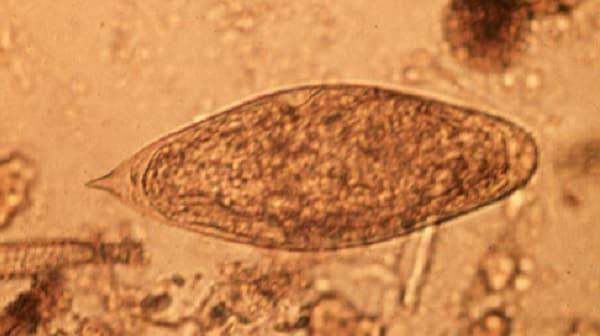Key points
- Schistosomiasis is a disease caused by parasitic worms.
- The parasites that cause schistosomiasis live in certain types of freshwater snails.
- Schistosomiasis spreads when you come into contact with unsafe water that contains these snails.
More Information

Overview
Schistosomiasis, also known as bilharzia, is a disease caused by parasitic worms. More than 200 million people worldwide are infected. Schistosomiasis is one of the neglected tropical diseases (NTDs). It is the second most dangerous parasitic disease after malaria. The parasites that cause schistosomiasis live in certain types of freshwater snails. Although schistosomes are in the United States, they are not the species that infect people.
The infectious form of the parasite, called cercariae, comes out of the snail into the water. You can become infected if your skin comes in contact with unsafe freshwater.
Most human infections are caused by these species:
- Schistosoma mansoni
- S. haematobium
- S. japonicum
Less common infections are caused by these species:
- S. mekongi
- S. intercalatum
Signs and symptoms
Most people have no symptoms at the early phase of infection. Some have a rash or itchy skin in the first few days.
Within 1 – 2 months of infection, symptoms may include:
- Fever
- Chills
- Cough
- Muscle aches
Repeated infections in children can cause:
- Anemia (lack of red blood cells)
- Malnutrition (lack of nutrients)
- Learning difficulties
You can also develop chronic (long-term) symptoms if you do not treat the infection. The eggs cause inflammation or scarring when traveling to the intestine, liver, or bladder.
If you think you have schistosomiasis, see your healthcare provider.
Let them know:
- If and where you've traveled recently
- How long you were there
- If you may have touched unsafe water
Exposure risks
You might get schistosomiasis if your skin touches freshwater from canals, rivers, streams, ponds, or lakes in places where it is common. Please refer to WHO's map on where schistosomiasis currently spreads.
Africa
- Southern and sub-Saharan Africa (high risk)
- North Africa's Maghreb region
- Egypt and Sudan's Nile River valley
Asia
- Southern China
- Southeast Asia
- Cambodia
- Indonesia
- Laos
- Philippines
- Cambodia
Europe
- Corsica (ongoing transmission or spread)
The Americas
- South America
- Brazil
- Suriname
- Venezuela
- Brazil
- Caribbean (low risk)
- Antigua & Barbuda
- Dominican Republic
- Guadeloupe
- Martinique
- Montserrat
- Puerto Rico
- Saint Lucia
- Antigua & Barbuda
The Middle East
- Iran
- Iraq
- Saudi Arabia
- Yemen
How it spreads
Schistosomiasis spreads in six steps:
- Schistosoma eggs enter freshwater when people with schistosomiasis urinate (pee) or defecate (poop) in the water.
- The eggs hatch, infect a specific type of freshwater snail, develop, and multiply inside the snails.
- The Schistosoma parasite leaves the snail and enters the water, where it can live for about 48 hours.
- The parasite enters the skin of people who are in contact with unsafe water.
- Within weeks, the parasites turn into adult worms in the blood vessels of the body.
- The female worms produce eggs that travel to the bladder or intestine and come out in urine or stool (poop).
Prevention
The most effective ways to prevent schistosomiasis include:
- Do not get into or touch unsafe freshwater.
- Drink safe water.
- Water for bathing
- Boil you bath water.
- Add 1 mg of chlorine per liter of water and let sit for 30 minutes.
- Let water sit for 24 hours before bathing.
- Boil you bath water.
